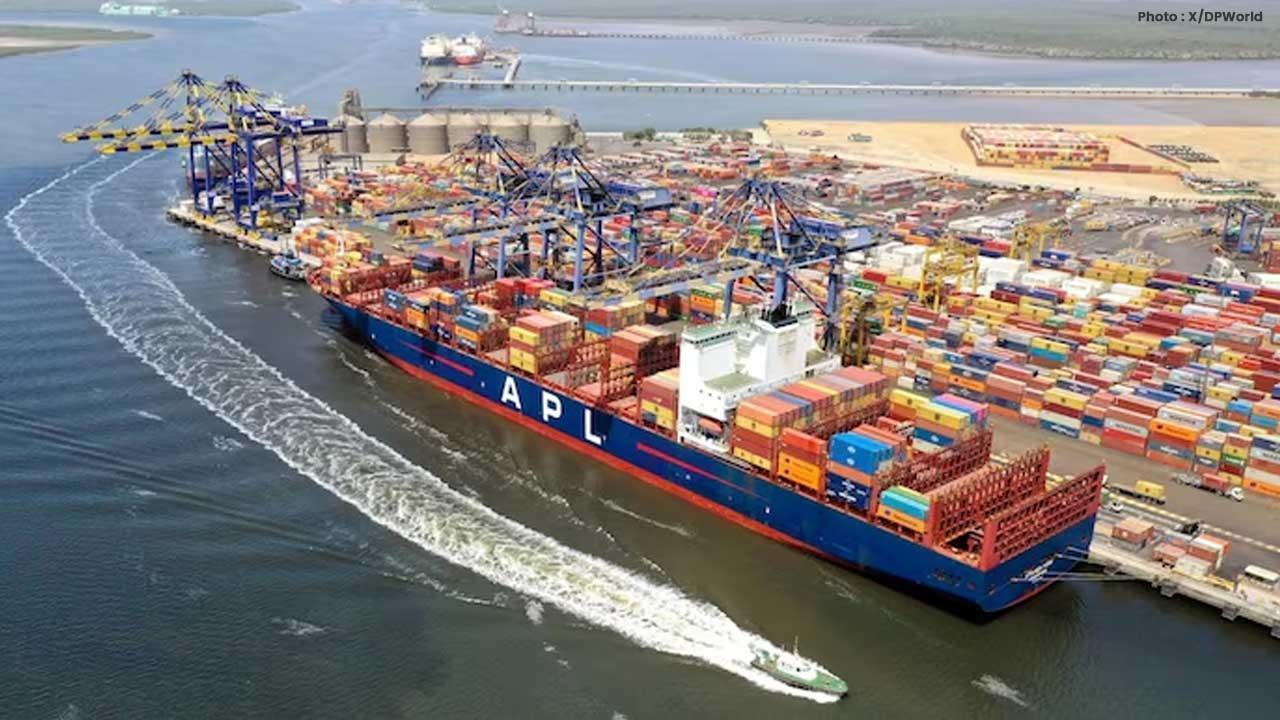
Join 10k+ people to get notified about new posts, news and tips.
Do not worry we don't spam!

Post by : Anis Farhan
The 21st century is witnessing a revolution unlike any before. Automation, powered by artificial intelligence, robotics, and machine learning, is transforming industries, reshaping economies, and redefining what it means to work. Machines are performing tasks once reserved for humans—an advancement that promises unprecedented efficiency. Yet, beneath this progress lies a profound paradox: the same technology designed to improve productivity is also displacing millions of jobs.
From self-driving trucks to AI chatbots, automation’s reach is expanding rapidly. While some hail it as a solution to labor shortages and economic stagnation, others warn of a looming employment crisis. This paradox raises urgent questions: Can economies adapt to automation without sacrificing livelihoods? Is technological progress a threat or an opportunity for human workers?
Automation isn’t new—it has evolved through centuries of human innovation. The Industrial Revolution in the 18th and 19th centuries mechanized production, displacing traditional crafts but creating new industries in manufacturing and transport. The digital revolution of the late 20th century introduced computers and the internet, transforming white-collar work and communication.
Today, we are in the era of intelligent automation, where machines can learn, adapt, and make decisions. Unlike past revolutions, this wave affects both blue-collar and white-collar workers alike. Factories employ robots instead of assembly-line workers, while AI algorithms perform accounting, legal research, and even creative writing.
This marks a shift not just in how we work but in what skills define human value in the labor market.
1. Manufacturing:
Automation began here, and it continues to dominate. Robotic arms assemble cars, electronics, and machinery with precision and speed unmatched by humans. Countries like Japan, South Korea, and Germany lead in industrial robotics adoption.
2. Logistics and Transportation:
The development of autonomous vehicles threatens millions of jobs in trucking, delivery, and public transport. Major logistics firms are testing self-driving trucks and drone deliveries, aiming to cut costs and enhance efficiency.
3. Retail and Customer Service:
Automated checkout systems, AI chatbots, and predictive analytics are redefining retail experiences. While they improve customer convenience, they also replace cashiers and call center agents.
4. Finance and Banking:
Algorithms now analyze risk, approve loans, and manage investments faster than human analysts. Fintech innovations streamline services but shrink traditional banking roles.
5. Healthcare:
AI assists in diagnosis, robotic surgery, and drug development, increasing accuracy but reducing administrative and analytical roles in medical systems.
6. Agriculture:
Smart tractors, drones, and AI-powered sensors are revolutionizing farming. Labor-intensive tasks like harvesting and soil analysis are increasingly automated, affecting millions of agricultural workers globally.
Automation’s impact varies widely across nations and economic classes.
Developed Economies:
In nations like the US, Japan, and Germany, automation helps counter aging populations and labor shortages. However, it also deepens inequality, as low-skilled workers face displacement while high-skilled professionals thrive in technology-driven roles.
Developing Economies:
For emerging markets, automation poses a more complex challenge. Manufacturing and services—key sources of job growth—are vulnerable to technological disruption. For instance, garment factories in Bangladesh and call centers in India risk losing jobs as companies adopt robotic systems and AI-based customer interfaces.
Job Polarization:
Automation tends to hollow out middle-income jobs. Routine and repetitive tasks are replaced by machines, while high-skill and low-skill jobs expand. This polarization widens income inequality and weakens the traditional middle class.
Despite the fear of mass unemployment, history shows that technology also creates new opportunities. The World Economic Forum estimates that while automation could displace 85 million jobs by 2025, it could also create 97 million new ones.
1. Rise of the Tech Workforce:
Demand for AI specialists, data scientists, robotics engineers, and cybersecurity experts is surging. These roles didn’t exist two decades ago but are now essential.
2. Expansion of Green Technologies:
Automation in renewable energy, waste management, and sustainable agriculture is generating new employment avenues aligned with environmental goals.
3. Growth of the Gig Economy:
Automation is reshaping employment structures. Freelancing, remote work, and digital platforms are empowering individuals to work independently, often aided by automation tools that enhance productivity.
4. Human-AI Collaboration:
The most promising trend is collaboration rather than replacement. In medicine, education, and design, humans and machines are working together to achieve higher accuracy and creativity.
Economists refer to automation’s conflicting outcomes as the productivity paradox. While technology boosts efficiency and output, it doesn’t always lead to corresponding job growth. The gains often concentrate among large corporations and investors, leaving workers behind.
This paradox also reflects a lag between innovation and adaptation. It takes time for economies, educational systems, and labor markets to adjust. During that transition, job insecurity and social inequality widen, fueling anxiety and resistance toward automation.
1. Inequality and Job Displacement:
As machines take over routine tasks, lower-income workers are disproportionately affected. The benefits of automation often accrue to those with capital or technical skills, widening the wealth gap.
2. Skill Obsolescence:
Rapid technological change renders many skills obsolete. Lifelong learning becomes not just an option but a necessity.
3. Psychological Impact:
Job insecurity and automation anxiety are rising. Workers fear replacement, eroding mental well-being and social trust in technology.
4. Ethical and Governance Concerns:
Automation introduces ethical dilemmas. Should AI make hiring decisions or medical diagnoses? How do societies ensure fairness, transparency, and accountability?
To navigate the automation paradox, proactive strategies are essential.
1. Re-Skilling and Education:
Governments and industries must invest in education that prioritizes creativity, problem-solving, and digital literacy. Traditional rote learning will no longer suffice in an AI-driven economy.
2. Human-Centric Policies:
Rather than resisting automation, policies should focus on supporting displaced workers through retraining, income support, and job transition programs.
3. Ethical AI Governance:
Establishing frameworks for responsible AI ensures that automation serves humanity rather than undermines it. Transparency, accountability, and fairness must be embedded in AI design.
4. Universal Basic Income (UBI):
Several countries are experimenting with UBI—a fixed income for all citizens—to cushion economic shocks from automation. Though controversial, it could offer a safety net during technological transitions.
The future will not be defined by machines alone but by how societies integrate them. Humans will remain central to innovation, empathy, and creativity—qualities that machines cannot replicate.
Hybrid work environments where humans and AI collaborate are already emerging. In healthcare, AI analyzes data while doctors make empathetic decisions. In journalism, AI drafts content while editors refine narratives. These partnerships represent a balance between efficiency and humanity.
Automation should not be seen as an enemy of employment but as a catalyst for redefining work. Instead of eradicating jobs, it will transform them—creating roles that emphasize strategy, oversight, and creativity over repetition.
Automation is inevitable, but its consequences are not predetermined. Whether it leads to mass unemployment or a new era of prosperity depends on collective action—how governments regulate technology, how businesses deploy it responsibly, and how individuals adapt through lifelong learning.
The jobs paradox reminds us that technological progress is both a challenge and an opportunity. Machines may perform our tasks, but only humans can give work meaning. The future of employment, therefore, lies not in resisting automation, but in embracing it intelligently—ensuring that technology enhances human potential rather than replaces it.
This article is for informational and editorial purposes only. It explores current global trends in automation, employment, and technology without offering financial or professional advice.










Mitchell Marsh Backs Aggressive Plan Ahead of India T20 Series
Australia captain Mitchell Marsh says his team will continue playing fearless cricket as they prepar

Smriti Mandhana Becomes World’s No.1 ODI Batter
India’s Smriti Mandhana rises to No.1 in ICC Women’s ODI rankings with a career-best rating of 828 a

Suryakumar Yadav Focuses on Team Spirit and Fielding Goals
India captain Suryakumar Yadav stresses teamwork, energy, and stronger fielding efforts ahead of the

Sherwood Leads Canucks to Overtime Win Against Oilers
Kiefer Sherwood scored twice, including an overtime winner, as Vancouver Canucks defeated Edmonton O

Freeman Leads Dodgers to 6-5 Thriller Over Blue Jays
Freddie Freeman’s 18th-inning walk-off homer gives the Dodgers a thrilling 6-5 win over the Blue Jay

Bayern Target Another Victory in German Cup Match
Bayern Munich look to continue their perfect start to the season with a German Cup clash against Col